“We Had Nothing Left”: N.E.R. in Erivan
Near East Relief’s work in Erivan (now Yerevan, Armenia) is often overshadowed by the well-known work at Alexandropol. But Erivan has a fascinating story that is all its own. This Dispatch begins with the article “32 Beans a Day,” which appeared in the Near East Relief newsletter in July 1922. Then, we explore the Erivan Orphanage with N.E.R. worker Dorothy Sutton.
Don’t miss the important announcement about the Digital Museum at the end of this Dispatch.
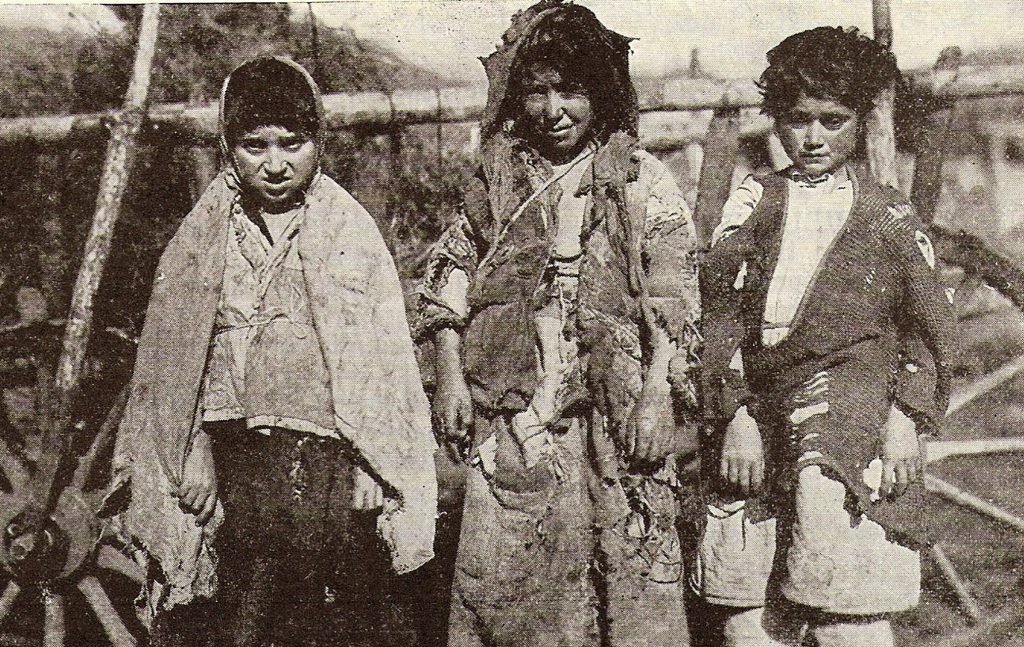
Children waiting outside of a Near East Relief orphanage. New Near East magazine, April 1922.
"32 BEANS A DAY"
Mr. Wilfred Keller, a former resident of Linden Hall, near State College, PA, discovered near Erivan, Armenia, eighty-six children living on thirty-two beans each per day. They had taken refuge in the old military barracks of Daranchichak* far up on the mountain side above Erivan.
Various reports had drifted to the Near East Relief Director at Erivan that there was great suffering in the snowed-in mountain villages, owing to the lack of seed for planitng, the failure of the few crops, and the difficulty of travel during the winter months. A gaunt man, half dead, had staggered into the city and spread the news. At first he could hardly speak, and only pointed to the mountains.
* Daranchichack (also called Darachichak) is now known as Tsghkadzor, Armenia. The old Persian name meant “valley of flowers.”
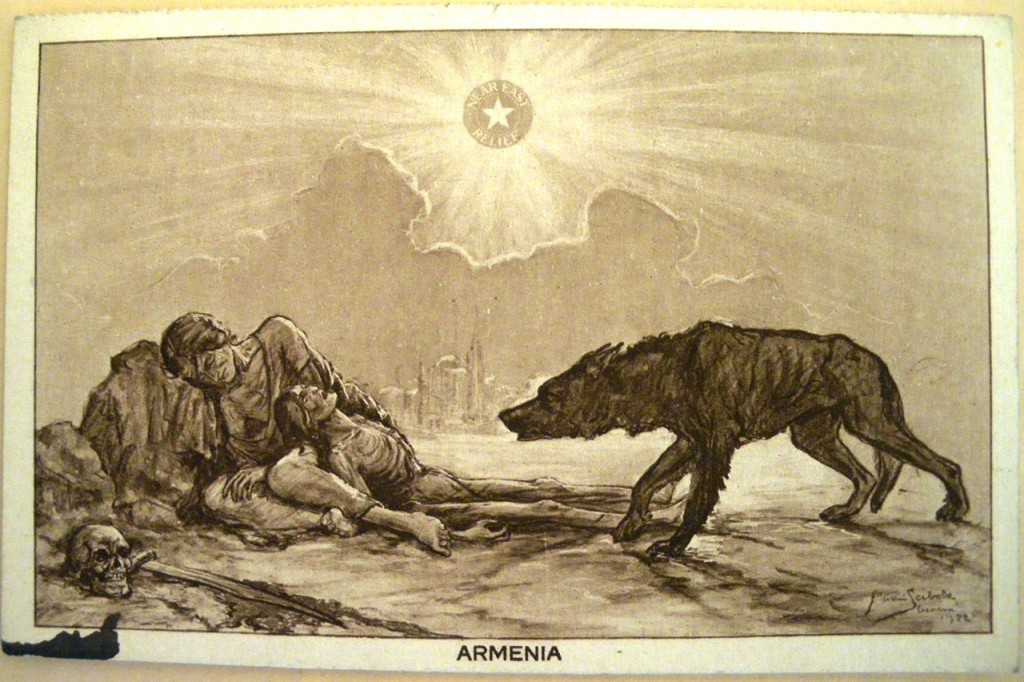
Near East Relief promotional postcard illustrated by Maxim Seibold, 1922.

Forty ox-carts were quickly loaded with Near East Relief supplies, and Mr. Keller started out through the snow with his caravan on a hunting trip for mountain villages where children were starving.
On the way, he passed the bones of donkeys, camels, and smaller animals which had been killed and eaten by the hungry wolves which were roaming the country. Although it was early spring, the oxen were up to their knees in snow and traveling was difficult.
Finally the old military barracks at Daranchichak came into view. The jingle of the bells of the caravan called out a crowd of gaunt beings from buildings which once housed the army of the Czar. Followed by this shouting, pleading mob, the caravan pushed forward to the barracks where Mr. Keller found the eighty-six starving children lying listlessly in corners.
Right: Children waiting outside of a Near East Relief orphanage. New Near East magazine, November 1922.
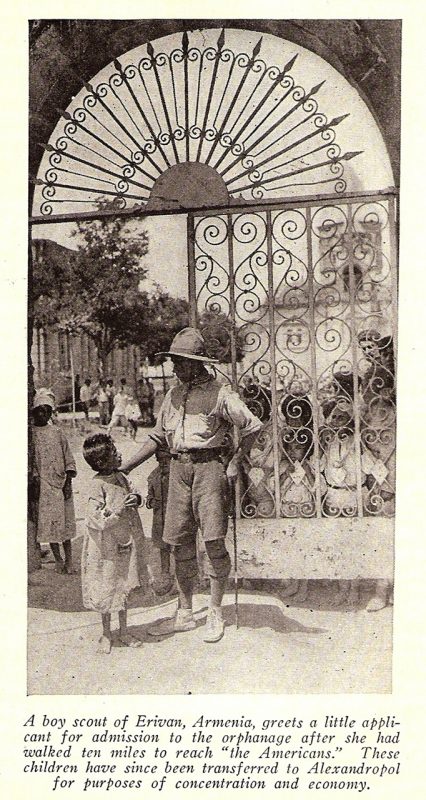
The headman of the village, propped on a huge stick for support, told Mr. Keller the story of his people.
“We older people had given up all hope of life,” he said, “so we put aside the few beans for the children. We counted them and allowed 32 beans for each child per day while they lasted. You have arrived when the ration would last but one more day. One of our men volunteered to find his way through the snow to Erivan to secure help but we did not know that he had escaped the wolves.”
Upon being asked what the older people were eating, the man answered, “Many of us are dead; only the very strong survive. The children are nearly all orphans. You have arrived when we had nothing left.”
Mr. Keller turned over the supplies to the village headman, and the people gathered about their leader like wolves. When Mr. Keller decided to take the eighty-six children back to Erivan, there was great thanksgiving in the little village. The children needed medical care if they were to live.
Left: A Boy Scout greets a new arrival at Erivan Orphanage. New Near East magazine, October 1923.

Near East Relief worker R.M. Davidson with new arrivals at Erivan. New Near East magazine, April 1922.
On the return trip to Erivan, the caravan had a different aspect. Instead of bags of American flour, corn grits, and evaporated milk, the wagons were loaded with ragged children, the sick lying on the wagon floor and the stronger ones grouped along the sides.
The snow was so deep that the oxen made but slow progress, and the blinding snowstorm made the homeward trip difficult. One wagon was overturned, and Mr. Keller had to fish the children from the snowbanks.
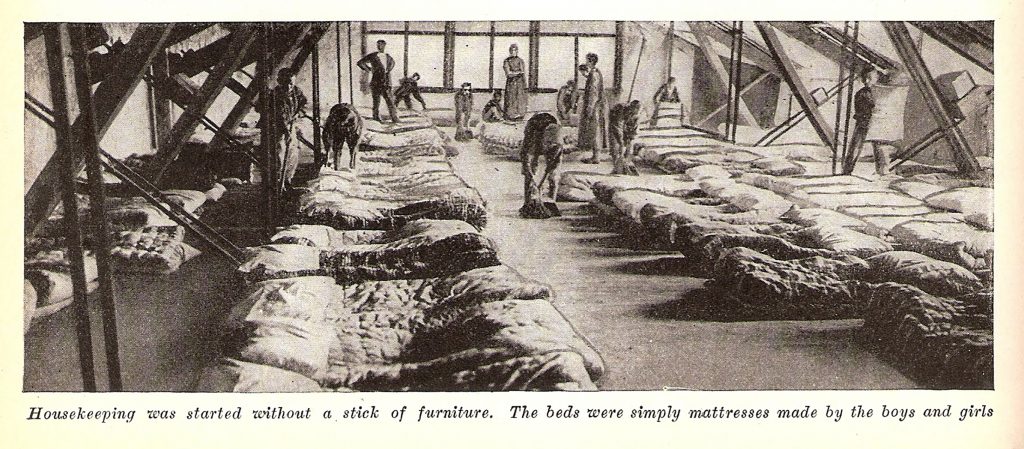
“It was a weird trip,” said Mr. Keller. “We met heavily laden camel trains when we reached a beaten track, but the camels always required much coaxing and driving to make them turn out in the deeper snow. It was a great relief when Erivan came into view in the valley below, and a greater relief when we landed the children safely at a Near East Relief orphanage. The people back home should have seen those children when they entered the warm building and were put to bed in real beds. They snuggled down in warm American blankets and went to sleep with the first look of happiness I had seen on their thin faces.”
Recently the old military barracks at Daranchichak have been turned into an up-to-date American orphanage, and 600 children are growing strong and sturdy on wholesome food and fresh mountain air.
This concludes the July 1922 Near East Relief newsletter article.

DOROTHY SUTTON'S ERIVAN
The children that Keller rescued from Daranchichak found a home in a very special place. Like so many Near East Relief stations, the orphanage at Erivan was built from almost nothing.
Early Near East Relief worker Dorothy H. Sutton was a member of the Leviathan party. Sutton rescued 400 children from the streets of Erivan in the early 1920s — but she had nowhere to house them. The local government offered Sutton an abandoned house. The house had once been spacious and beautiful, but by 1921 it was in ruins. All of the windows were broken. The floors were littered with shards of glass. Most of the roof had collapsed. There was no furniture.
Sutton and the children rolled up their sleeves and went to work. The children installed windows and patched the roof. Boys built tables and chairs. Girls sewed mattress covers and stuffed them with hay to create cozy beds. Sutton calculated just how many children she could fit in the house.
Then, Dorothy Sutton took to the streets of Erivan with a stack of paper tickets.

Dorothy Sutton with children.
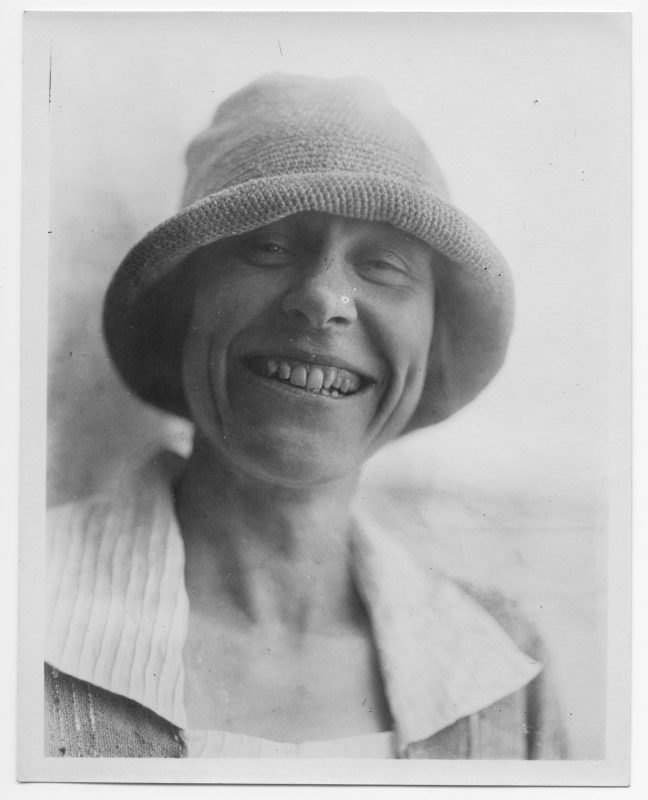
Each ticket guaranteed admission for one child to the new orphanage. There were far more orphans than there were beds. Every single child on the streets of Erivan was ill and hungry. Sutton could only take in the most hopeless cases. The healthier children would have to wait.
Near East Relief orphanages in Armenia served more than 22,000 children in 1922. Relief workers were forced to leave an additional 10,000 children waiting at the gates. In 1923, the children from the Erivan Orphanage were transferred to Alexandropol as part of Near East Relief’s consolidation of relief work in Soviet Armenia. They became citizens of the Orphan City.
Dorothy Sutton went on to work with Near East Relief in Ismid, and later in Greece. She served as the Director of Child Welfare in Salonica (Thessaloniki). Sutton cared for 300,000 refugees and 50,000 children in camps and orphanages throughout the region. She received the Greek Cross of the Redeemer in Athens in July 1923. In 1926, Dorothy Sutton accepted a Near East Relief Distinguished Service Award.
Dorothy Sutton died in Virginia in 1970. Her personal papers are on file at the American School of Classical Studies in Athens, Greece.
Left: Near East Relief worker Dorothy Sutton, c. 1922.
AN IMPORTANT ANNOUNCEMENT
The Near East Relief Historical Society is changing. The Digital Museum is becoming part of the Near East Foundation’s excellent Communications department. Your loyal curator (Molly) will be leaving NEF at the end of October.
The Digital Museum will still be available online. The digital Exhibit will always be available. You can still download our Teacher’s Guide and request They Shall Not Perish: The Story of Near East Relief, our panel exhibition. You are always welcome to visit our physical archives at the Rockefeller Archive Center. You can still read past Dispatches here.
You are welcome to contact me directly at [email protected] with any questions.
